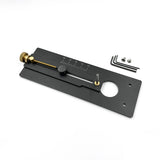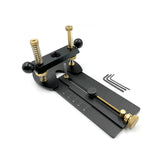Shipping & Return
Shipping
All orders are processed within 1-2 business days, You will receive a notification when your order has shipped.
Successfully placed orders will receive an e-mail confirmation with the order details. If you do not receive an e-mail, please check your spam filter or contact us.
For more shipping details please check our Shipping Policy.
| Country | Ship From | Delivery Time | Price |
| United States | California | 3-5 days (USPS First Class) | Free |
| United States | California | 2-4 days (USPS Priority)* | Free |
| Other Countries | China | 10-20 days (Standard) | Free* |
| Other Countries | China | 7-10 days (Expedited) | Calculated |
*Shipping type automatically upgrade to USPS Priority when order weighs more than 1 pound. (United States)
*For Canada shipping addresses, Shipping charges from 1kg.
Below is the Standard shipping delivery time for some countries, for more information please check our Shipping Policy page.
| Country | Delivery Time |
| U.K | 9-14 days |
| Australia | 12-20 days |
| Canada | 10-18 days |
Return
We want our customers to be happy. If for any reason you are not satisfied with your purchase from us and wish to return it for a refund, we accept returns up to 30 days after delivery. To start a return or you have any return question, please contact us.
Damages and issues
Please contact us if the item is defective, damaged or if you receive the wrong item, we will arrange a refund or exchange.
Refunds
We will notify you once we’ve received and inspected your return, and let you know if the refund was approved or not. If approved, you’ll be automatically refunded on your original payment method. Please remember it can take some time for your bank or credit card company to process and post the refund too.





